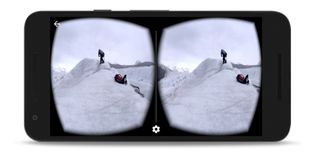YouTube Gets VR Video – Here’s How to Watch It
YouTube now supports virtual reality videos, and its new Cardboard mode turns all videos into 360-degree immersive content.

YouTube videos just got real -- well, almost. The video hosting network now supports 3D virtual reality (VR) videos, meaning you may actually be able to immerse yourself in the next cat video you watch. You'll need a Google Cardboard VR headset to experience YouTube's 360-degree 3D content, some of which is already available.

VR videos are slightly different from simple 360-degree media, which YouTube already supports. The latter is a flat environment that you can see more of as you turn your head around, but VR actually gives you more depth, giving you a real sense of distance between near and far objects as you look around.
MORE: VR Headset Mega Guide: Features and Release Dates
Not all videos on YouTube are in VR. Videos such as the Hunger Games Experience and the Apollo 11 VR video trailer already support virtual reality, but there aren't many others at the moment. Starting today, though, YouTube will offer a new Cardboard mode to turn any video it hosts into a "virtual movie theater" experience. It will split any video into two stereoscopic displays, so you can pop your phone into a VR headset, put the goggles on, sit back and watch your video in a virtual 3D environment.
To try that out, just go to any YouTube video on the Android version of the app, turn on full screen mode, tap the three-dot settings button and select Cardboard. Then, put your phone into a Cardboard viewer -- models start at around $20 and work with most phones -- and strap on the glasses. This eliminates the need to hold up your phone when watching a long video. The feature doesn't seem to be available on the web version of YouTube yet.
Don't mistake that for VR content, though. The Cardboard feature does not add any depth to video content that is not actually VR. However, it's still a neat new way to experience your favorite YouTube videos.
- Wearing HoloLens: The Future of Computing on My Face
- Gear VR for Galaxy S6 Review - May Induce Awesomeness
- The Best Headsets for Immersive Gaming
Sign up to get the BEST of Tom’s Guide direct to your inbox.
Upgrade your life with a daily dose of the biggest tech news, lifestyle hacks and our curated analysis. Be the first to know about cutting-edge gadgets and the hottest deals.
Cherlynn is Deputy Editor, Reviews at Engadget and also leads the site's Google reporting. She graduated with a Master’s in Journalism from Columbia University before joining Tom's Guide and its sister site LaptopMag as a staff writer, where she covered wearables, cameras, laptops, computers and smartphones, among many other subjects.

